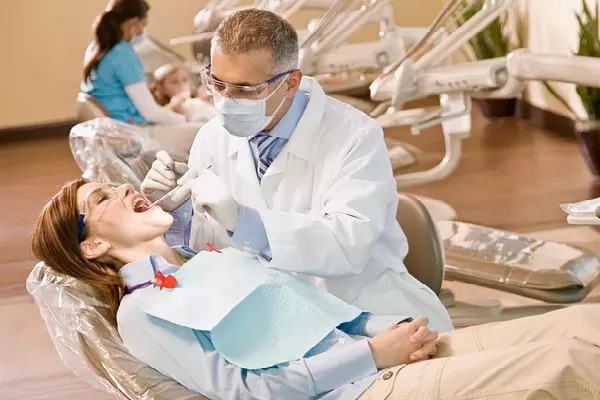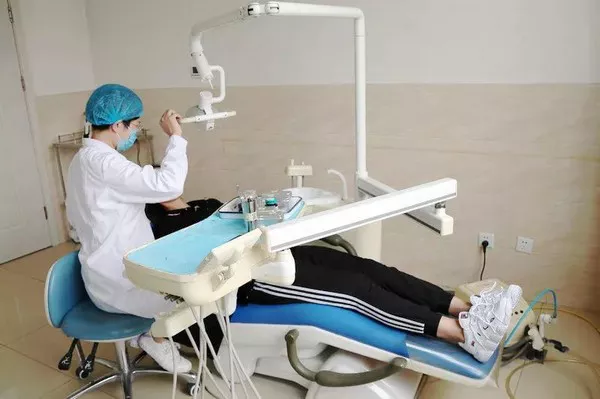Orthodontic treatment has evolved significantly over the years, offering a variety of options to help individuals achieve beautifully aligned smiles. Among these options is the lingual brace, a discreet and effective orthodontic solution that has gained popularity. If you’re curious about “What is a lingual brace?” and how it differs from traditional braces, this article will provide you with a comprehensive overview of this innovative treatment option.
Understanding Lingual Braces
A lingual brace is a type of orthodontic appliance that is attached to the back (lingual) surface of the teeth, making it virtually invisible from the front view. Unlike traditional braces, which are affixed to the front of the teeth, lingual braces offer a more discreet way to straighten teeth while maintaining a natural appearance.
The Components of Lingual Braces
Lingual braces consist of several key components:
Brackets: Lingual brackets are customized to fit the contours of the back surfaces of the teeth. They are bonded to the teeth using a dental adhesive.
Archwires: Archwires are thin metal wires that connect the brackets and apply pressure to guide the teeth into their desired positions.
Elastic Bands: Elastic bands or ligatures are used to secure the archwires to the brackets, allowing for controlled movement of the teeth.
Benefits of Lingual Braces
Discreet Appearance: One of the most significant advantages of lingual braces is their inconspicuous nature. Since the brackets are positioned on the back of the teeth, they are not readily visible when you smile.
Aesthetic Appeal: Lingual braces offer an aesthetic solution for individuals who desire orthodontic treatment without the appearance of traditional braces.
Customized Treatment: Lingual braces are customized to fit the individual’s teeth, allowing for precise and personalized treatment.
Consistent Results: Lingual braces can effectively address a wide range of orthodontic issues, delivering consistent and predictable results.
Minimal Speech Impediments: While there may be an adjustment period, many individuals find that lingual braces cause fewer speech impediments compared to traditional braces.
Comfort: The smooth design of lingual brackets can contribute to a comfortable treatment experience.
The Process of Getting Lingual Braces
The process of obtaining lingual braces typically involves the following steps:
Consultation: Schedule an initial consultation with an orthodontist to determine if lingual braces are the right treatment option for you. Your orthodontist will evaluate your oral health, discuss your goals, and explain the treatment process.
Impressions: Your orthodontist will take impressions of your teeth, which will be used to create customized brackets and archwires.
Bracket Placement: Once the customized brackets are ready, your orthodontist will bond them to the back surfaces of your teeth using a dental adhesive.
Archwire Installation: After the brackets are in place, the archwires are inserted and secured with elastic bands. The archwires will be adjusted periodically to guide your teeth’s movement.
Follow-Up Appointments: Regular follow-up appointments with your orthodontist are essential to monitor your progress, make adjustments, and ensure the treatment is proceeding as planned.
Duration of Treatment: The duration of lingual brace treatment varies depending on the complexity of your case and your orthodontic goals.
Considerations for Lingual Braces
Oral Hygiene: Proper oral hygiene is crucial while wearing lingual braces. Cleaning the back surfaces of your teeth may require additional care.
Adjustment Period: There may be an initial adjustment period during which you become accustomed to the sensation of the braces on the back of your teeth.
Speech: Some individuals may experience temporary speech changes, which typically improve as they get used to the braces.
Dietary Considerations: While there are fewer dietary restrictions compared to traditional braces, it’s advisable to avoid hard or sticky foods that could dislodge brackets or damage archwires.
Is Lingual Braces Right for You?
Lingual braces are an excellent option for individuals who value aesthetics and are looking for a discreet orthodontic treatment. However, not everyone is a suitable candidate for lingual braces. Your orthodontist will assess your specific case and discuss whether lingual braces align with your orthodontic needs and goals.
Conclusion
Lingual braces offer a unique and inconspicuous approach to orthodontic treatment, allowing individuals to achieve a straight and aligned smile without the appearance of traditional braces. These braces provide a range of benefits, including discretion, customized treatment, and comfortable design. The process of obtaining lingual braces involves customized bracket placement, archwire installation, and regular follow-up appointments to monitor progress.
While lingual braces are a great option for many, it’s essential to consider factors such as oral hygiene, speech adjustments, and dietary considerations. Consultation with an experienced orthodontist will help you determine if lingual braces are the right choice for your orthodontic journey. With the help of lingual braces, you can confidently work towards achieving a beautifully aligned smile while maintaining a natural appearance.
Related Topics:































